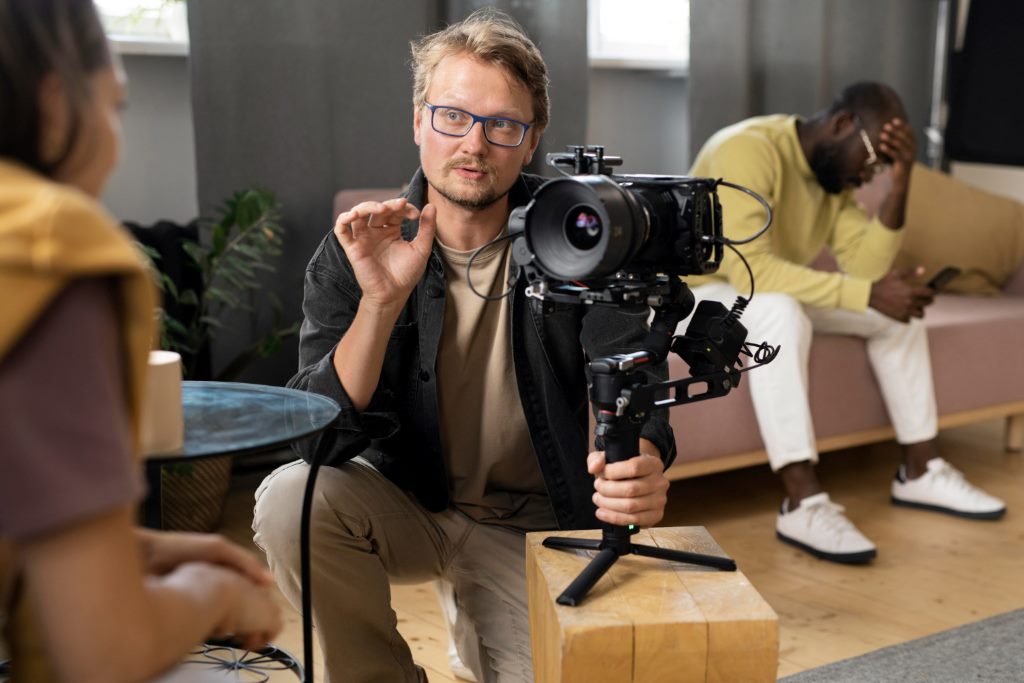In the changing field of education and training, the use of videography has emerged as a valuable tool that enhances learning environments. This article explores the impact videography has on education spanning from traditional classrooms to corporate training programs.
We will delve into why it’s effective in its applications, in different learning settings, and the advantages it offers to educators and learners.
Unveiling the Effectiveness of Visual Learning
Visual learning is a transformative approach that taps into humans’ natural inclination towards stimuli. In both education and corporate training this methodology takes the stage as a tool, for conveying information in an engaging and resonant manner.
The Impact of Visual Learning, on Education
When it comes to education the power of learning cannot be overstated. As humans we naturally gravitate towards visuals and incorporating them into the learning process greatly enhances our understanding and ability to retain information.
Simplifying Complex Ideas
Corporate videography learning is especially valuable when tackling subjects. Whether it’s explaining business processes or demonstrating hands-on skills videos can simplify these ideas by breaking them down into digestible segments.
This proves beneficial in training programs where employees often need to grasp intricate details related to their roles.

Enriching Classroom Education
In settings, corporate videography brings an added dimension to online classroom experiences. Educators can incorporate videos as material during lectures offering students a multimedia approach to learning.
Not only does this cater, to learning styles but it also captures and maintains students’ attention in today’s world filled with constant digital distractions.
Adapting to Remote Learning in the Digital Era
The emergence of online learning has further emphasized the significance of videography. Both educational institutions and businesses utilize videos to bridge gaps and facilitate learning in environments.
Video content enables learners to access information from anywhere promoting flexibility in education and training endeavors.
Transforming Corporate Training
Within the realm, the use of videos has become a game changer, for training programs. Whether it’s welcoming employees or fostering skill development videos provide a scalable and consistent way to deliver training content.
By allowing employees to access videos at their pace it ensures a personalized learning experience that accommodates different schedules and learning speeds.
The Advantages of Corporate Videography in Learning
Videography offers an array of benefits that revolutionize how information is presented and absorbed within the realm of learning. One key advantage lies in increased engagement and retention.
1. Enhanced Engagement and Retention
Incorporating videography into learning environments provides an advantage through enhanced engagement levels. Visual content captivates attention effectively than text-based materials leading to heightened focus and participation.

Furthermore, the combination of audio and visual elements boosts information retention ensuring that learners retain concepts long after the video concludes.
2. Consistency and Standardization in Training
Maintaining consistency in training is vital for organizations operating globally. Corporate videography films an approach to training guaranteeing that all employees receive high-quality content regardless of their location.
This consistency promotes culture and ensures that essential information is communicated uniformly across the entire organization.
3. Efficiency in Time and Cost
Traditional training methods often require investments of time and resources. However, with corporate videography organizations can streamline the learning process by delivering training content.
Additionally, the ability to repurpose video materials minimizes the need for training sessions resulting in time and cost savings associated with training efforts.
4. Conciseness and Engagement
In today’s paced environments time is a valuable asset. To maintain levels among viewers it’s important to keep videos concise and focused. Break down content, into segments that are easy to digest while using visually appealing elements and compelling narratives to capture and retain the viewer’s attention.
5. Incorporate Interactive Elements
Make your videos more engaging. Enrich the learning experience, by including elements. You can add quizzes, surveys, or clickable links that lead to resources. These interactive features do not reinforce learning. Also, makes the viewer’s experience more engaging and participatory.
Overcoming Challenges and Looking Ahead
Integrating videography into settings comes with its fair share of challenges. However conquering these obstacles is crucial, to fully unleash the potential of this tool.
1. Overcoming Resistance to Change
Although the advantages of incorporating video into learning environments are evident there may be some resistance, in making this transition. To address this organizations should consider implementing training programs that familiarize educators and employees with the benefits of using videos for learning purposes.
2. Future Trends in Corporate Videography
Looking ahead advancements in technology will shape the future of videography in learning environments. Augmented reality (AR) and virtual reality (VR) are expected to play a role in creating learning experiences.
These innovative technologies have the potential to simulate real-world scenarios offering learners hands-on experiences within a controlled and virtual setting.
Conclusion
Corporate videography has undoubtedly revolutionized the way we approach learning across settings from classrooms to boardrooms. The utilization of learning through videos has enhanced engagement levels, streamlined training processes, and improved knowledge retention.
As technology continues to progress incorporating cutting-edge tools like AR and VR will further transform the landscape of education and professional development within settings. Embracing the possibilities presented by videography is not an investment in technology but also an investment, in shaping the future of education and career growth.




